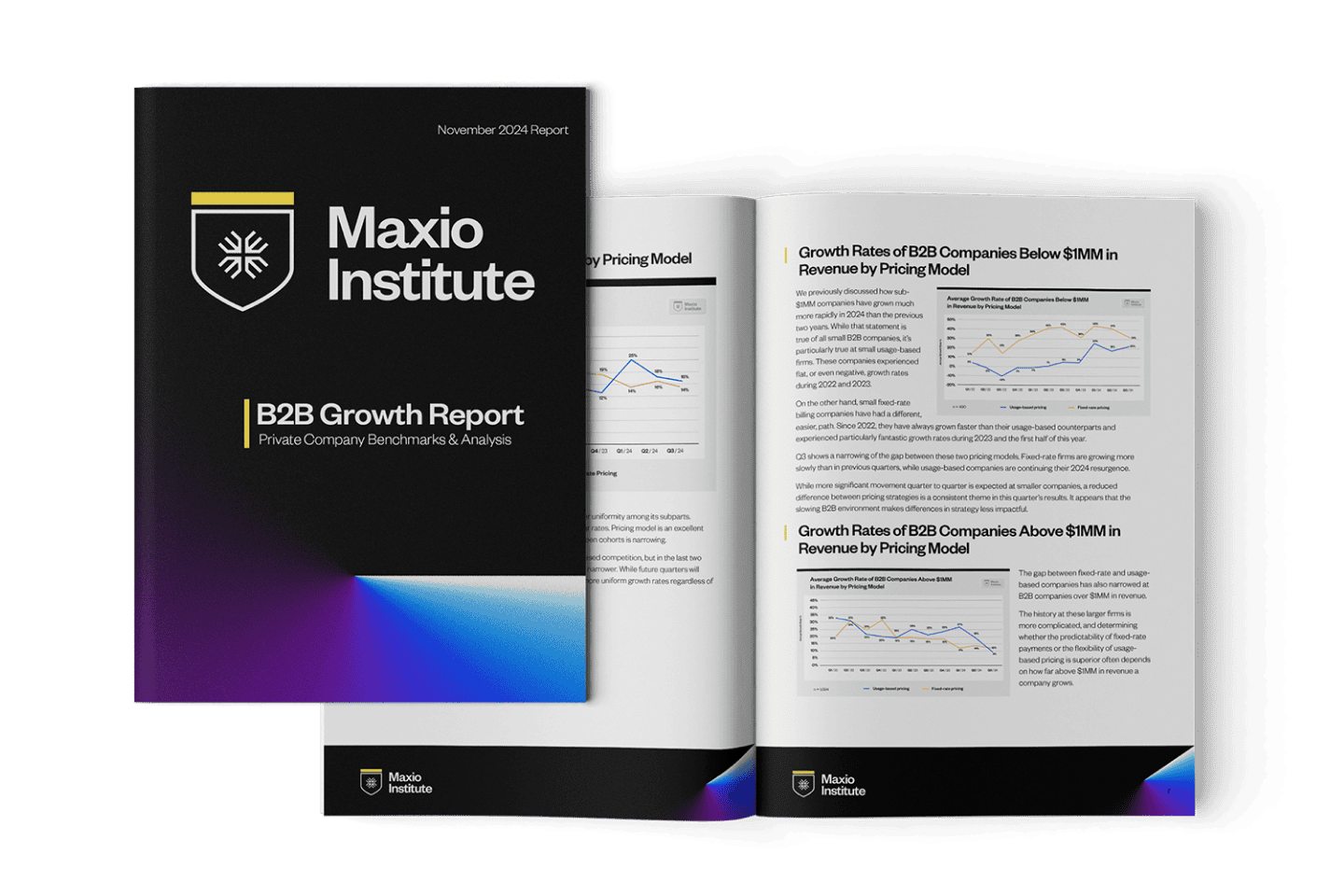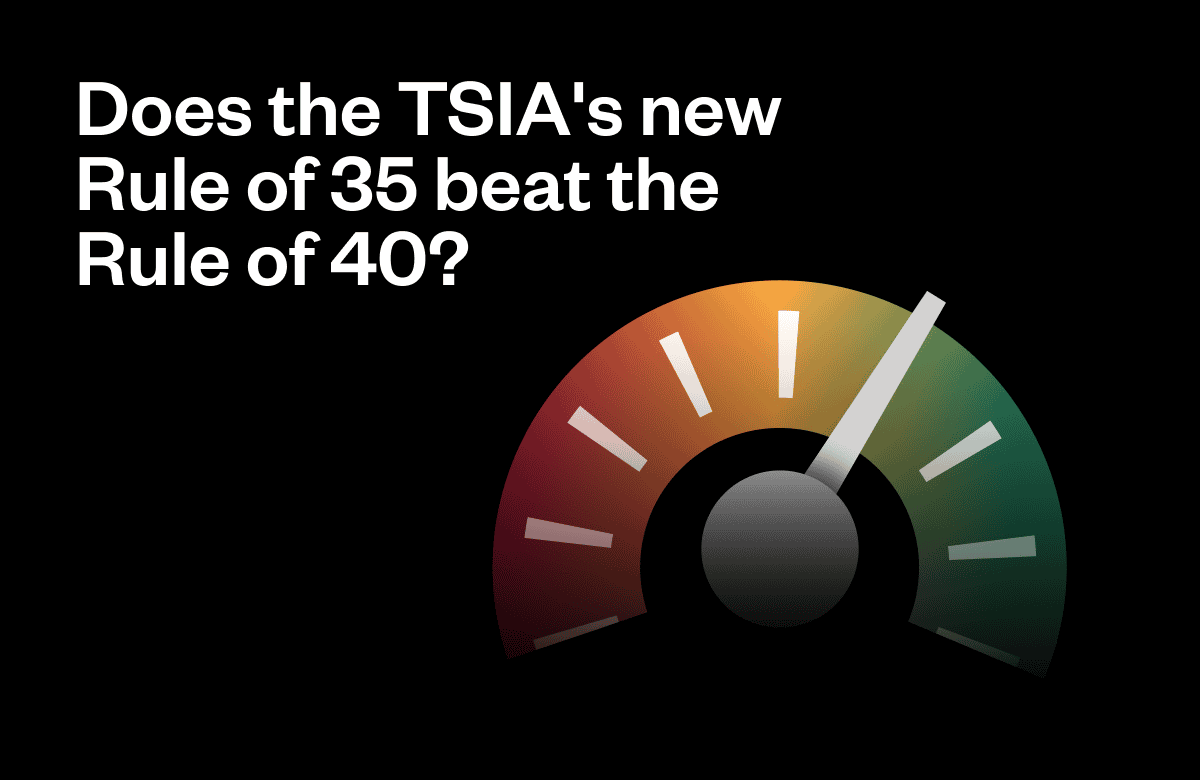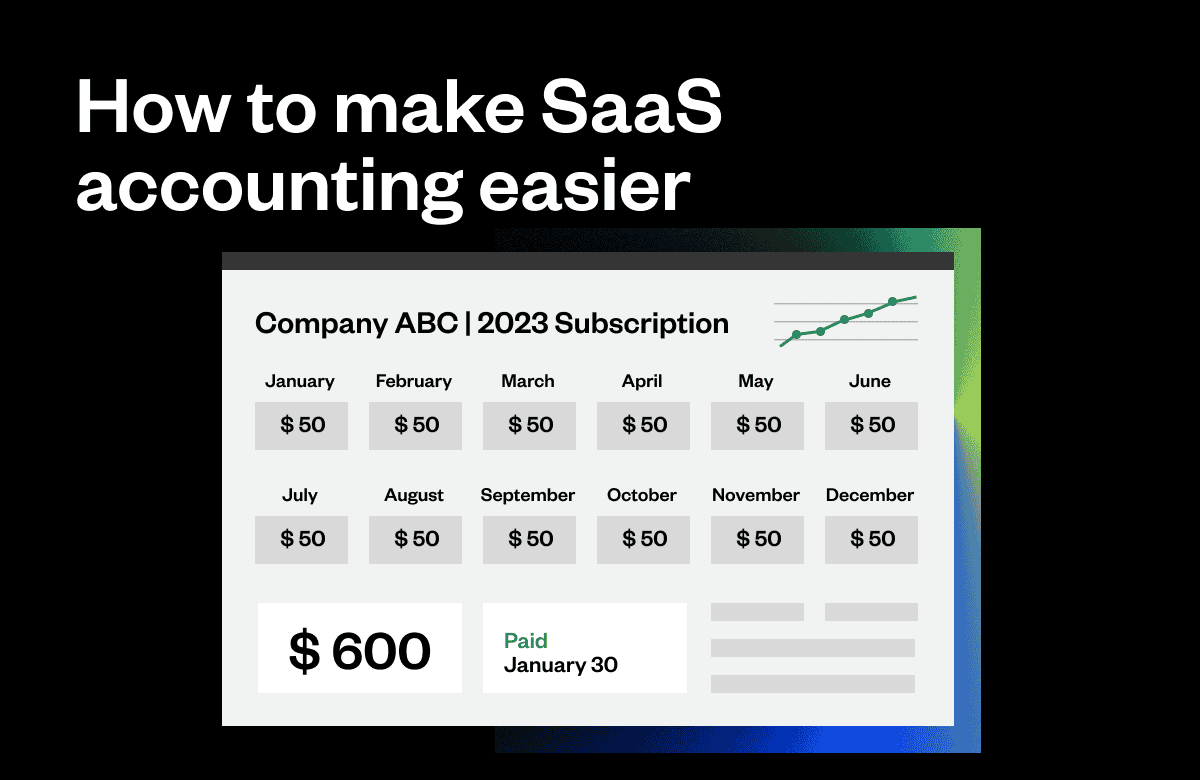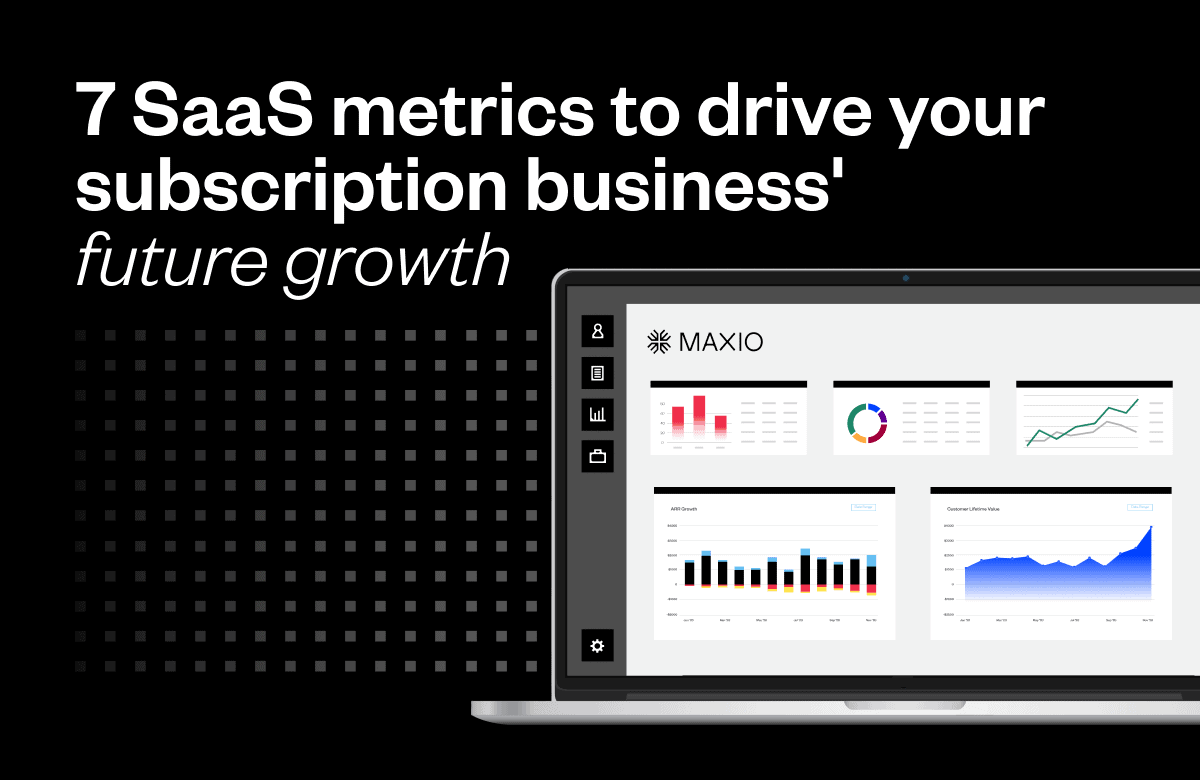In this episode of Maxio’s SaaS Expert Voices podcast, I interviewed Thomas Lah, a leading expert on SaaS business models. Aside from being a serial author and a professor at Ohio State University, Lah brings over two decades of experience advising technology firms on strategy, business operations, and professional services as the co-founder of the Technology Services Industry Association (TSIA).
During our discussion, Lah gave me his invaluable perspectives on the rapid evolution of software delivery models, the performance metrics that actually matter, and actionable ways executives can transform their organizations to achieve sustainable growth. Whether you’re a founder aiming to scale responsibly or an established leader managing through economic uncertainty, these insights from Thomas Lah will show you how to uncover hidden profitability levers in your business and scale your SaaS responsibly.
How the SaaS industry has changed since cloud-based delivery
The software industry wasn’t always the “move fast and break things,” product-led, AI-powered hodge-podge that’s synonymous with the tech industry today.
The SaaS landscape has undergone big changes since the emergence of cloud-based software delivery over a decade ago. As Lah recounts, “If you look at software companies right now, there’s really three profiles” consisting of born-in-the-cloud providers, legacy on-prem vendors, and a majority occupying a middle “hybrid mode.” He elaborates that these companies have “moved their pricing models to recurring, so they have a lot of subscription revenue” but maintains that “there’s still a lot of on-prem out there.”
According to Lah, this transitional positioning creates financial instability for many SaaS ventures.
By failing to realize the economies of scale and operational efficiencies that are intrinsic to genuine cloud platforms, products risk becoming competitively disadvantaged. “I think there’s no doubt that [cloud-based delivery] is the winning distribution model,” says Lah.
The verdict is clear—true cloud-native architectures represent the undisputed winning approach to long-term success. The question facing organizations today is not whether to make the leap, but how to migrate their legacy systems without disrupting the business.
TSIA Cloud 40 Index: How are top cloud companies performing?
To quantify the financial performance of leading SaaS businesses, Lah spotlights analytical research from TSIA’s benchmarking of “The TSIA Cloud 40”, an index of 40 of the largest born-in-the-cloud companies.
He notes, “If you move forward to what we’re seeing now [in Q3 2023], the TSIA Cloud 40 companies are growing by 14% on average, but that’s down from a couple of years ago when they used to grow north of 20%.”
Despite the decrease in growth for cloud-based companies, Lah also noted that we’re seeing improving gross margins as operators squeeze more from existing infrastructure. As Lah reports, these companies are now seeing “about 70% gross margin.” However, he also highlights how their “sales and marketing expenses are getting chipped down.”
This chipping away of vital GTM functions like sales and marketing over the past year has left profits lacking, with Lah stating that the average GAAP “operating income [remains] lingering in negative territory at -7%.” On the other hand, best-of-breed competitors like Salesforce have turned the corner to consistent profitability.
In Lah’s estimation, for SaaS companies operating in a competitive vertical or horizontal market, “it’s going to take a lot more work for these companies to get into a profitable posture.”
The “Rule of 40” vs. TSIA’s “Rule of 35”
Given this recent uninspiring profitability, Lah questions the traditional benchmarking metrics that investors use to evaluate SaaS companies. If you’ve read my article on the subject, you know I believe SaaS founders should obsess over the Rule of 40, so I was curious to hear Thomas’s perspective.
He first addresses the ubiquitous “Rule of 40,” which states that as long as revenue growth percentage plus profit margin percentage exceeds 40%, a company demonstrates adequate financial health. As Lah points out, this benchmark “rewards high growth even with losses” and has become a “myth” that is rarely achieved in practice.
To better assess operational efficiency, his firm, TSIA, devised what they believe to be the superior “Rule of 35.”
As Lah explains, it harshly scores companies by saying they should convert at least 35 cents of each dollar into profit after accounting only for basic product delivery and sales/marketing costs. Savvy analysts now use this formula and have discovered that “the rule of 35 companies’ valuations are holding up much better” through turbulence.
Essentially, the ability to functionally operate at scale now trumps impractical growth targets, but investor perspectives still need to catch up to this reality.
Revenue Acquisition Cost (RAC): A new way to track sales efficiency
Alongside broader profitability, Lah meticulously tracks sales efficiency as a key indicator of enterprise health. He highlights Revenue Acquisition Cost (RAC) as a crucial metric that compares investment in sales and marketing to revenue growth yielded.
Calculating ratios here benchmarks how much spending is required to acquire each incremental dollar of income. Lah reveals that “the average RAC number for cloud companies is actually 2.84,” meaning $2.84 must be spent across the Cloud 40 to gain $1 in sales. However, leading players demonstrate far greater frugality. For example, cybersecurity company Zscaler achieved a RAC number of 0.46, attaining enviable customer monetization traction.
For laggard organizations with bloated RAC multiples, Lah warns, “If your RAC number is higher than your competitors, you have a problem. You have a serious problem.” Pencil-pushing sales leaders who are obsessed with negligible percentage gains often miss the bigger picture here, according to Lah. Modern cloud and SaaS companies should instead focus on maximizing their overall market capture through enhanced sales efficiency.
The changing role of the SaaS CFO
Let’s pivot away from abstract scoring systems for a second. While modern SaaS sales leaders have their work cut out for them, Lah also spotlights the urgent need for upgraded financial stewardship as a driver toward consistent profitability.
He observes that “there are a lot of SaaS executive teams that have never ever managed a profitable software business model” accustomed to an “it’s okay to lose money” ethos.
Today, the role of the modern SaaS CFO must expand beyond the historical duties of governance and reporting. Instead, they should act as a “genuine strategic partner and advisor to the rest of the business.” As Lah encourages, these finance leaders must build new competencies to help model, plan, and engineer sturdy yet dynamic profitable business models tailored to recurring revenue streams.
For SaaS finance leaders that only have experience scaling tech unicorns, TSIA research offers the “porpoise principle” as a viable framework for achieving efficient growth.
The “porpoise principle” states that: SaaS companies should demonstrate the ability to breach into profitability for a period to prove credible control of the enterprise, then optionally plunge resources into aggressive growth initiatives once more on a deliberate basis. If you’ve read Todd Gardner’s article on the Dolphin Strategy for SaaS growth, you know we believe in this same mantra—SaaS companies can operate unprofitably for long periods and still create substantial value
Lah concludes “there’s a new muscle that’s getting built there. [Finance leaders] really do need to be a strategic partner with the rest of the executive team to help get a vision around what a profitable business model is going to look like.”
Thomas’s proven tactics for getting SaaS companies profitable
While finance leaders are under pressure to adapt to new market circumstances, the good news is that becoming profitable doesn’t require reinventing the wheel. TSIA’s research has identified several strategies used by leading SaaS companies to build profitable recurring revenue models. Here are a few of the tactics Thomas gave me from our conversation:
1. Monetize your company’s service efforts
First, Thomas recommends “monetizing service efforts” instead of providing services that drain your company’s resources. Many SaaS companies offer customer support or professional services for free or at break-even pricing as part of their baseline packages. However, these resource-intensive services eat into profit margins.
Instead, you can consider capturing the value of these premium services by making them paid add-ons or limiting them to higher pricing tiers.
2. Diversify your sales channels
Next, he suggests “diversifying sales channels” to target different customer segments. For example, specialized customer success managers could handle simpler mid-market sales while complex enterprise deals can be reserved for seasoned account executives who are familiar with high-touch sales efforts.
Then, for prospects who may need more self-education before committing, you can offer free trials, freemium tiers, or low-touch webinar sales to enable bottom-up adoption. Making it easy to experience the value of your SaaS upfront can convert many smaller customers.
3. Leverage customer data to drive growth
Finally, Thomas advised me that companies should enable “customer-led growth” by leveraging their users’ usage data and analytics.
For example, your analysis may reveal certain use cases or workflows that strongly correlate with higher annual contract value. Customers using certain premium features or integrating with certain complementary tools may have higher retention rates. These signals will help you pinpoint segments that are primed for upsells into premium tiers or product bundles.
By using a SaaS metrics platform to keep up with your customer usage data, you’ll be able to both identify and take advantage of these signals to improve your profitability.
Navigating price increases (without losing customers)
There’s one last growth lever Thomas and I had to address that’s fairly straightforward: raising your prices.
Lah notes that we’ve definitely seen knee-jerk across-the-board price hikes throughout the technology space as a response to inflation. But Lah questions the sustainability of this tactic.
He warned that “customers are not going to just accept double-digit price increases.” He then highlighted bold moves like Salesforce imposing a sizable 9% fee escalation but cautions that most SaaS vendors lack the market dominance to unilaterally squeeze greater profits from their end-users.
Lah and I concluded, if you’re considering a 10-12% price increase but don’t have any competitive advantage or a pre-existing hold over your industry’s market share, you’re going to eventually lose customers. Plain and simple.
Instead, he advises a more strategic approach before hitting customers with higher costs. First, analyze which customers see your product as an essential “must-have” versus a “nice-to-have” they could live without. Segmenting your customer cohorts will inform the rest of your pricing strategy, whether that means offering discount bundles, implementing a usage-based pricing model, or pursuing customer expansion to hit your revenue goals.
Adopting the new SaaS playbook
As the SaaS landscape matures, leaders must update their go-to-market playbooks. This means embracing new performance metrics, pricing models, and executive responsibilities that are tailored to today’s cloud-native businesses.
Want to hear more from my conversation with Thomas Lah? Check out the full SaaS Expert Voices podcast episode to learn more.





